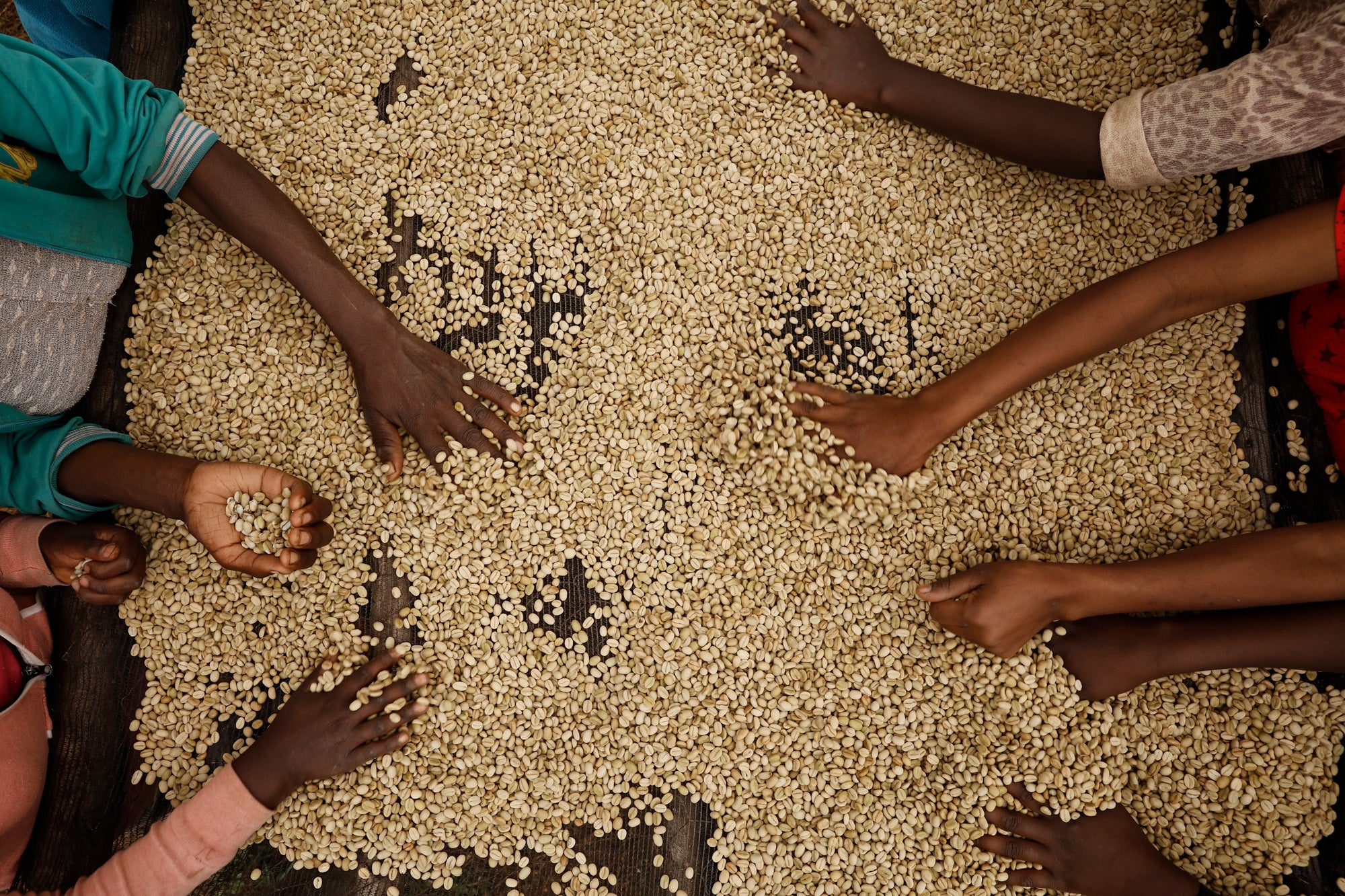San Cayetano, Yellow Honey Red Bourbon, El Salvador 2018
We have brought home coffee from San Cayetano in El Salvador that has been processed in three different ways. The Yellow Honey, Washed and Natural processes will each highlight different aspects of the coffee.
This is the Yellow honey version of the coffee, meaning that the pulp of the cherry has been removed, but the mucilage has remained on while drying the beans. The mucilage is very sticky and honey-like, hence the name. The “Yellow” just indicates how much of mucilage is left on, red honey being the most and yellow the second least. The honey processed gives a creaminess to the coffee, you will also find notes of marzipan, red apple and clementine zest acidity in the aftertaste.
About Rafael and Carmen Silva Hoff
This coffee is from Rafael and Carmen Silva Hoff who are based in Ahuachapán in Santa Ana. The couple has a processing station, Sicafe, where they process coffee for surrounding farmers. Carmen is doing all of the logistics not only for our purchases, but also for other farmers for whom they process coffee. At the processing station, Rafael is working hands-on for several hours each day, but the turnout at the processing station is also of a higher standard than we've seen elsewhere in El Salvador, e.g they have a separate room for the crew to sit and have lunch and rules about washing their hands and hygiene around the coffee. Staff onsite also only turn the coffee by hand, log the moisture at different stages of the drying process, and have access to a great cupping lab with a well-trained crew in taste and routines.
About San Cayetano
This coffee is from Carmen and Rafaels farm, called San Cayetano. It’s located in extremely steep and windy conditions where the leaves get blown right off the trees, making them weaker and less productive. The neighbouring farms to San Cayetano are suffering badly from leaf rust which can easily be transfered to the plants at San Cayetano by wind. For these reasons, the yield has been lower the last couple of years. But Rafael and Carmen have built more windbreakers to sheild their plants and the manager of the farm, Marco Roudrigues, has put in a lot of effort and many hours applying sulphate and fertilizers. Visiting the farm earlier this year it was more lush and had a much larger crop. Last year they had a lot of the farm that was badly affected by the roja and Marcos have applied opera and zink (helps the leaves). They also apply natural organic fertiliser made at the farm. San Cayetano looks really healthy and lush.
About the varietal Red Bourbon
The Red Bourbon trees are fairly tall and have thinner spines. Every year Rafael talks about planting Caturra instead of Red Bourbon at San Cayetano. The Caturra is shorter and bolder and would be more resistant to the wind. But Rafael loves the flavour characteristics of the Red Bourbon. In general in El Salvador I think the different kinds of Bourbon taste very sweet and complex.
The Bourbon varietal was first discovered on the Bourbon Island, hence the name, and has been spread and is now grown all over the coffee growing world. Originating maybe on the island of Bourbon or perhaps Ethiopia, this varietal has many sub-varietals: Yellow-, Orange -and Red Bourbon. Because of its generally low yield, Bourbon tends to produce a very high-quality cup (there is evidence that the lower the yield the higher the quality as the plant can use its energy more efficiently). Typical cup characteristics for Red Bourbon in El Salvador are a low-medium body, balanced, chocolatey, low-medium acidity with a typically sweet profile; this is a very general description of course.
About the Yellow Honey process
This is the Yellow Honey version of the coffee, meaning that the pulp of the cherry has been removed by pulpung the coffee, but the mucilage has remained while drying instead of washing it off as in the washed process. The mucilage is very sticky and honey-like, hence the name. Yellow just indicates how much of mucilage that is left on the beans, red honey being the most and yellow the least. The coffee has been dried directly under the sun for the first few days and then in the drying house on raised beds, consistently moved by hand for even rotation and drying. Every day-lot is being kept separated and removed in layers. As a honey-process, the coffee is being dried for a total time of 16-22 days.
Drop Coffee and San Cayetano
This is the fourth year we are buying the coffee from Carmen and Rafael. The family is so professional to work with and are so hardworking and the friendliest people. They have full control from the farm throughout the process and export to us. The last few years, we have had the San Cayetano as Christmas Coffee. So, let's just say that Christmas came very early this year.
FACTS
Producer: Rafael and Carmen Silva Hoff
Farm: San Cayetano
Process station: Sicafe
Region: Ahuachapán, Santa Ana
Varietal: Red Bourbon
Picked: February to March 2018
Process: Yellow Honey
Elevation: 1550 masl
Flavour description: A creamy coffee, with notes of marzipan, red apple and clementine zest acidity in the aftertaste.
Learn More
- Choosing a selection results in a full page refresh.
- Press the space key then arrow keys to make a selection.
